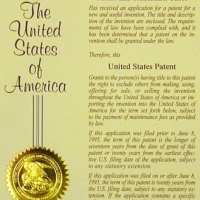How Does Testing Fit in a Patent Lifecycle?

A patent is a universal phenomenon; you can file one regardless of who you are or the position you hold in an organization. Some studies show patents are typically filed by men, specifically those from design and research and development backgrounds; in reality, there is nothing stopping anyone from filing for a patent.
Patents typically fall into a patent lifecycle and are successful when mapped to a commercialization plan. Patents can be filed by a commercial organization or by an individual. In both cases, the importance of testing in obtaining patent approval and commercialization cannot be underestimated. If a patent is in the software testing discipline, it obviously calls for a lot of in-depth testing.
A patent applier is often posed with a dilemma: prototype before or prototype after patent application. While this depends on variables such as domain, competition in the marketplace, timing of the patent, etc., it is important to get the prototype or blueprint thoroughly reviewed with a testing mindset during this invention stage.
When validating the prototype or blueprint design, functionality and architectural implementation ease are the main aspects of testing at this stage. One is often constrained by time and cost resources in this initial phase, and it is not worth spending any more on testing at this stage.
Once the patent has been applied for, some will get into the translation plan to proceed into development or selling their idea. While this has risks of its own in case the patent were rejected, this is a stage where much deeper testing is needed. Herein, testing takes a more familiar role, like in a product development lifecycle.
However, an additional role that would be useful here is comprehensive market analysis of the product under development.
Since the testing group may have been involved during the invention stage in understanding whether such a patent already exists, their knowledge can be leveraged in a more intrinsic manner now to understand competitor product features and associated quality in making recommendations for the new product at hand.
In the final commercialization phase where the product is ready to hit the market once the patent has been approved, the role of testers comes back to aligning with product support and maintenance, just like in a regular development lifecycle. However, testing plays an additional role in ongoing patent maintenance, including market analysis, use of similar technologies in other products, etc.
While this is a collaborative role to be played by the entire patent team, given that testers evaluate competitive products, they are at an advantage in helping in this last stage of the patent lifecycle.
If the patent is filed by an individual, he will have to play multiple roles, including that of a tester as described above. If filed by a group, it adds a lot of value to include a tester in the patent team to fulfill the above tasks as the patent flows through various statuses.

